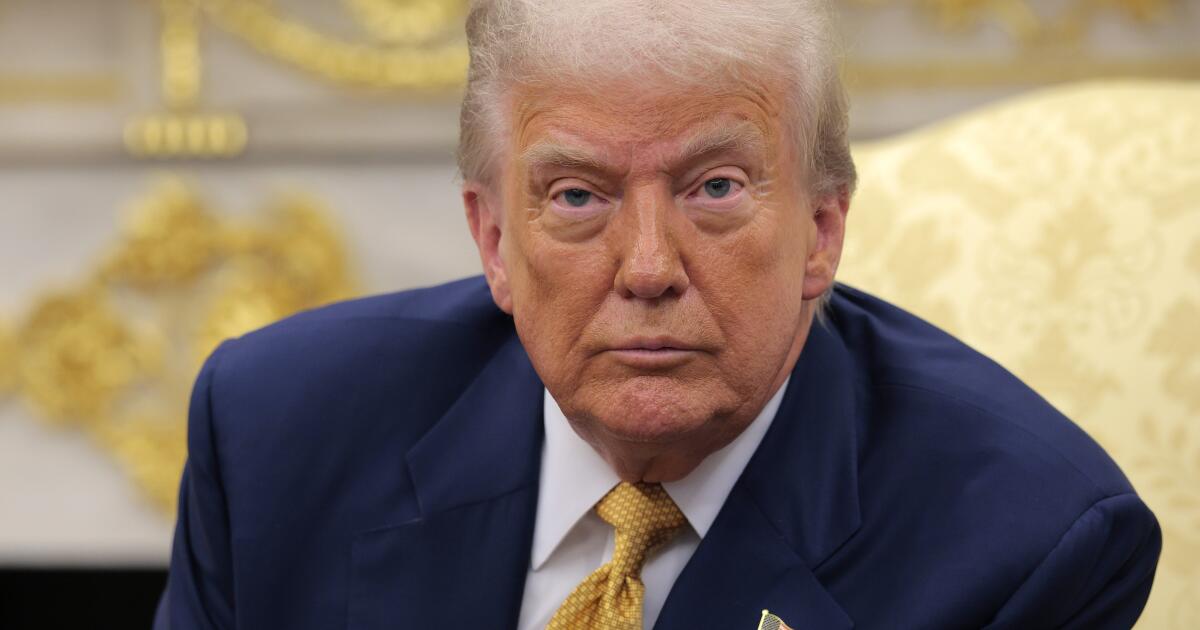Supreme Court puts off decision on whether Trump may fire Federal Reserve Governor Lisa Cook
WASHINGTON — The Supreme Court on Wednesday put off a decision on whether President Trump can fire Federal Reserve Governor Lisa Cook and said it would hear arguments on the case in January.
The court’s action allows Cook to remain in her position, and it prevents Trump from taking majority control of the historically independent central bank board.
Last month, the president said he fired Cook “for cause,” citing mortgage documents she signed in 2021 confirming that two different properties were her primary residence.
But the flap over her mortgages arose as Trump complained that the Federal Reserve Board, including Cook, had not lowered interest rates to his satisfaction.
“We will have a majority very shortly,” Trump said after he fired Cook.
In September, Trump appointed Stephen Miran, the chair of of his White House Council of Economic Advisers, to serve a temporary term on the seven-member Federal Reserve Board. He joined two other Trump appointees.
Congress wrote the Federal Reserve Act of 1913 intending to give the central bank board some independence from politics and the current president.
Its seven members are appointed by the president and confirmed by the Senate, and they serve staggered terms of 14 years, unless “removed for cause by the president.”
The law does not define what amounts to cause.
President Biden appointed Cook to a temporary term in 2022 and to a full term a year later.
In August, Bill Pulte, Trump’s director of the Federal Housing Finance Agency, alleged that Cook committed mortgage fraud when she took out two housing loans in 2021. One was for $203,000 for a house in Ann Arbor, Mich., and the second was for $540,000 for a condo in Atlanta. In both instances, he said she signed a loan document saying the property would be her primary residence.
Mortgage lenders usually offer a lower interest rate for a borrower’s primary residence.
Cook has not directly refuted the allegation about her mortgage documents, but her attorneys said she told the lender she was seeking the Atlanta condo as a vacation home.
Trump, however, sent Cook a letter on Aug. 25 that said, “You may be removed, at my discretion, for cause,” citing the law and Pulte’s referral. “I have determined that there is sufficient cause to remove you from your position,” he wrote.
Cook refused to step down and filed a suit to challenge the decision. She argued the allegation did not amount to cause under the law, and she had not been given a hearing to contest it.
A federal judge in Washington agreed and blocked her firing, noting that unproven allegation of mortgage fraud occurred before she was appointed to the Federal Reserve.
In a 2-1 vote, the appeals court also refused to uphold her firing.
Trump’s lawyers sent an emergency appeal to the Supreme Court on Sept. 18 arguing Congress gave the president the authority to fire a Fed governor he concludes she is not trustworthy.
“Put simply, the President may reasonably determine that interest rates paid by the American people should not be set by a Governor who appears to have lied about facts material to the interest rates she secured for herself — and refuses to explain the apparent misrepresentations,” wrote Trump Solicitor Gen. D. John Sauer.
But the justices refused to act on an emergency appeal and decided they will give the case a full hearing and a written decision.


